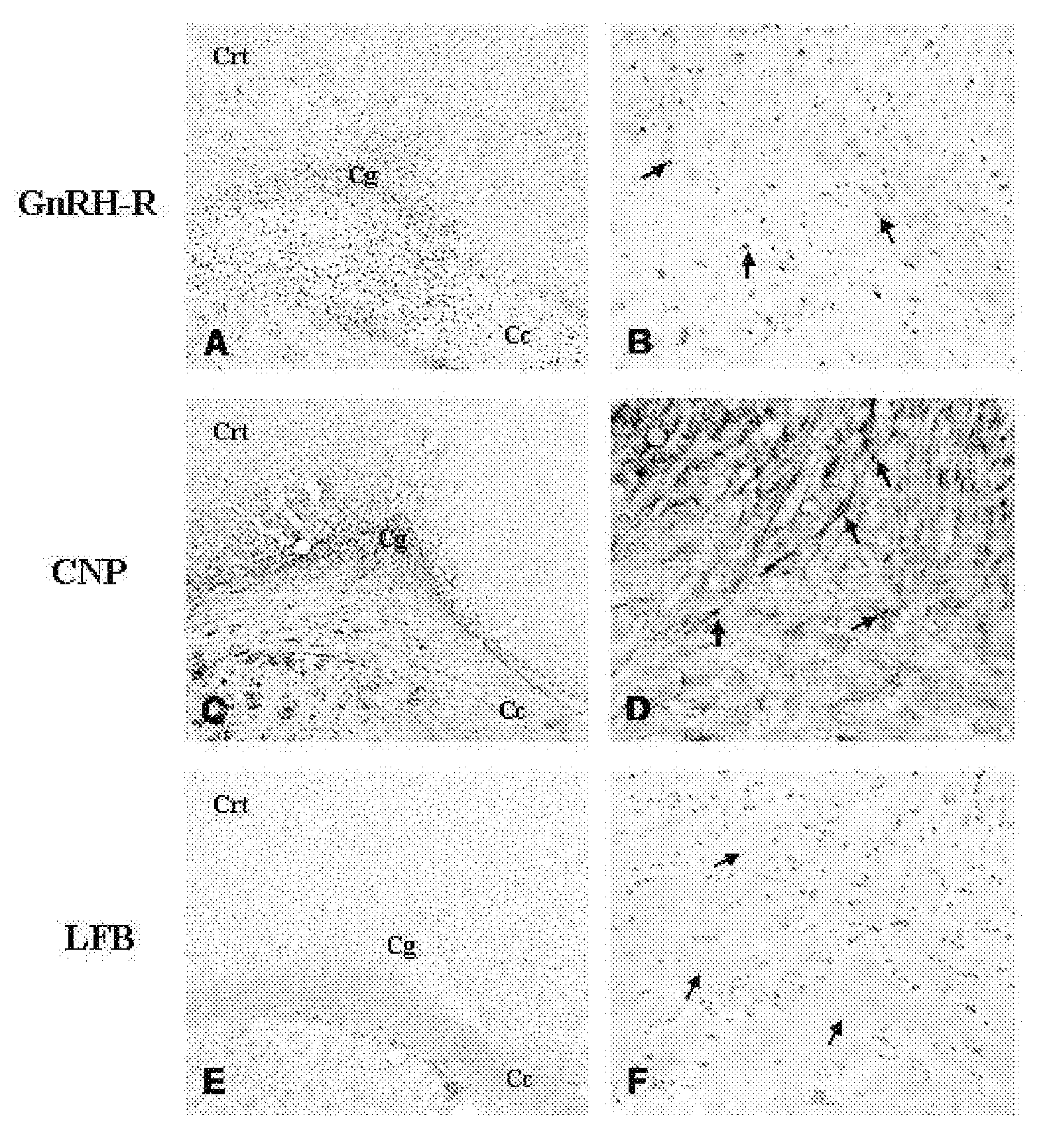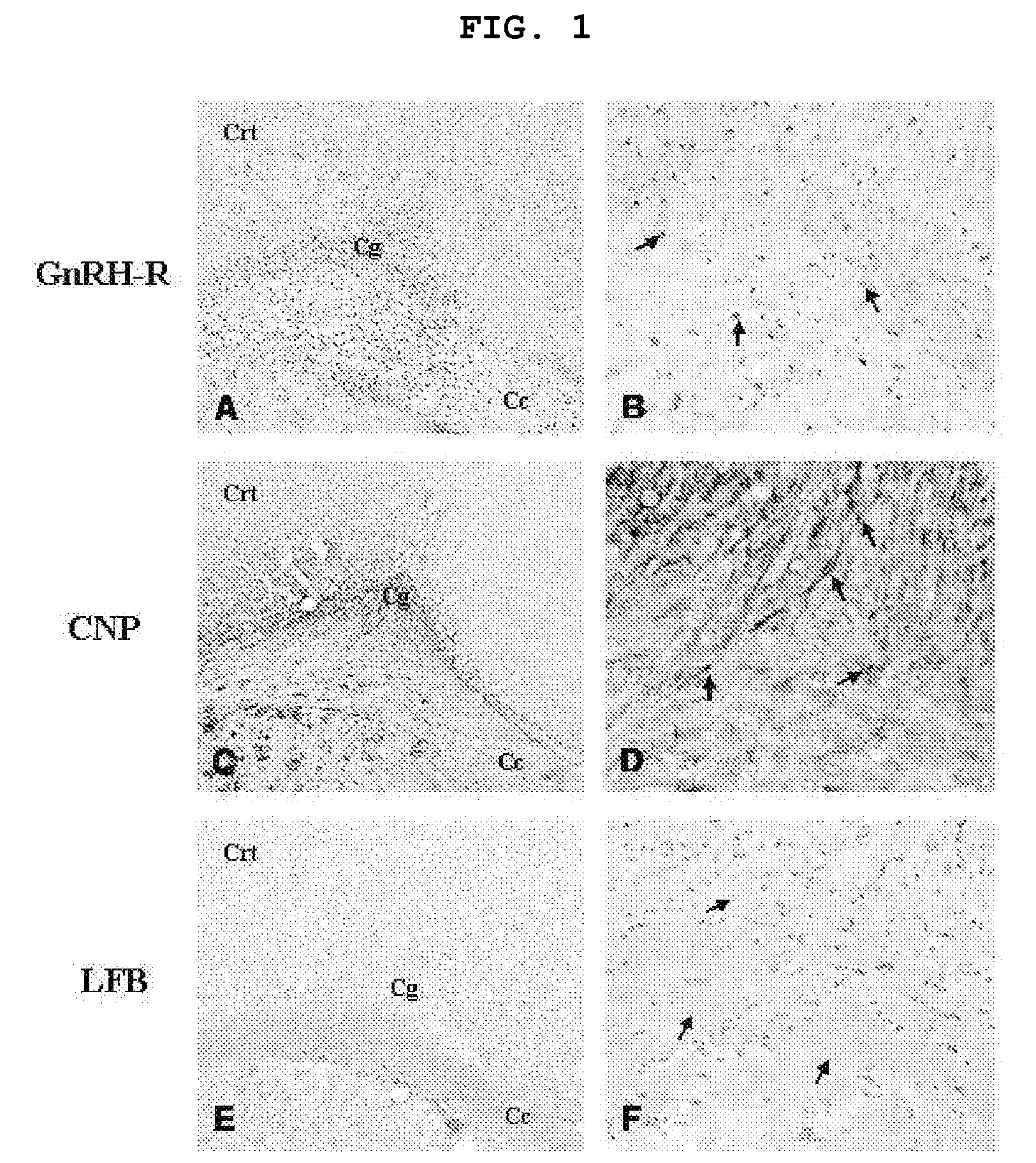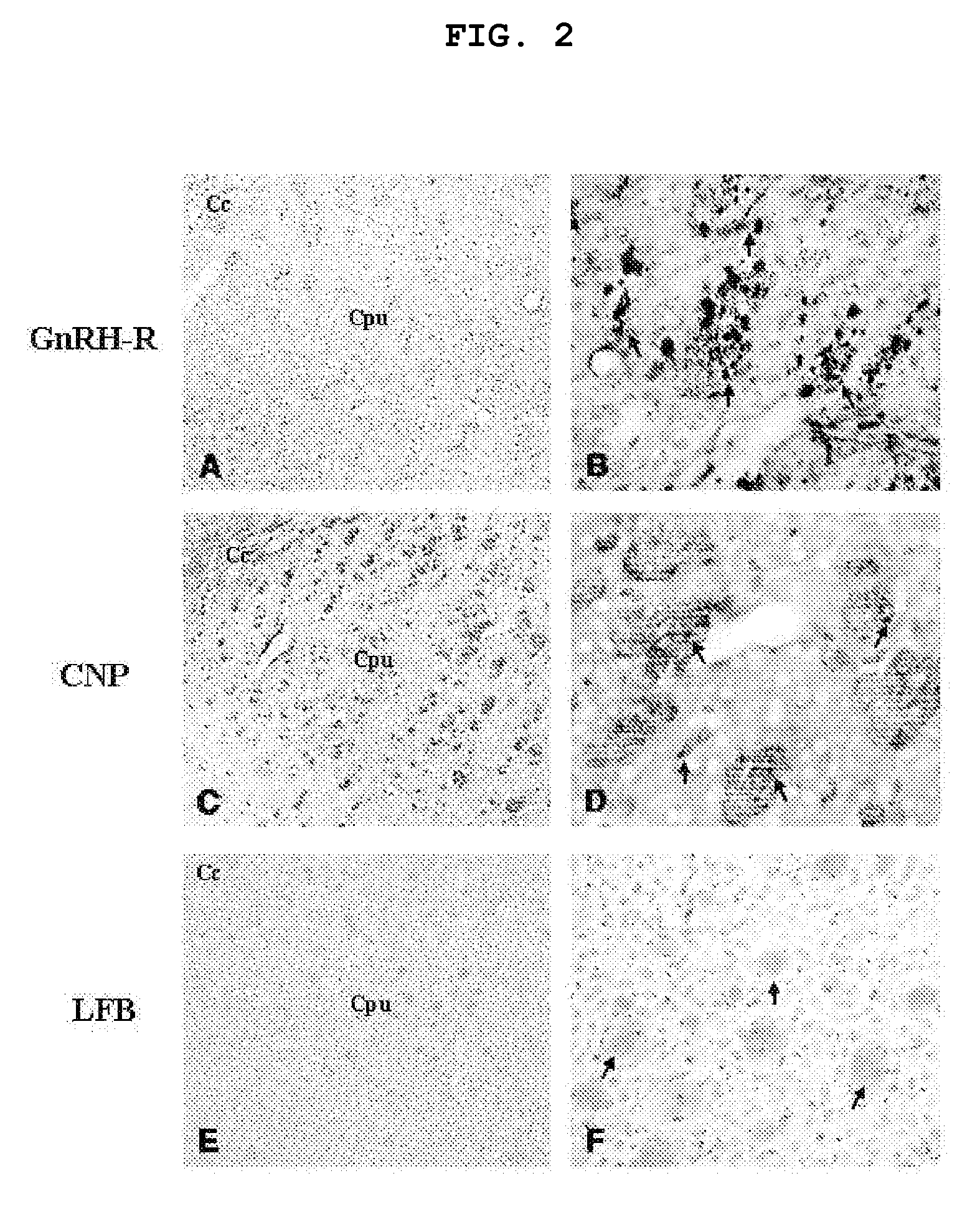Method for searching myelin using gonadotropin-releasing hormone receptors as a new biomarker
a technology of gonadotropin and receptors, applied in the field of searching myelin using gonadotropin-releasing hormone receptors, can solve the problem that the use of gnrh-r as a marker, myelin, has not been reported in scientific literatur
- Summary
- Abstract
- Description
- Claims
- Application Information
AI Technical Summary
Problems solved by technology
Method used
Image
Examples
experimental example 1
Anti-CNP Immunohistochemical Staining
[0058] Anti-CNP immunohistochemical staining was performed according to the method of Nishizawa et al. (Nishizawa Y et al., Neurochemical Research, 10, 1107-1118, 1985) with a slight modification. Particularly, a mouse (C57 / BL6, female, 18-20 g, 6-8 weeks old) was anesthetized with 4% chloral hydrate (10 mL / kg; Sigma), and the brain was fixed by perfusing 4% paraformaldehyde / 0.1 M phosphate buffer (pH 7.4) to the heart by using a peristaltic pump (Masterflex™, Barnant Co.). The brain was separated, followed by post-fixation in the same solution at 4° C. for 24 hours. Then, the brain was stored in 20% sugar / 0.1 M phosphate solution for overnight, followed by sectioning (40 μm) the brain using Vibratome 1000 plus™ (Vibratome). The sections were stored in a 24 well-plate containing 0.1% sodium azide / 0.1 M phosphate buffer at 4° C. until use.
[0059] The brain tissue section was washed with 50 mM Tris-HCl (pH 7.4) and then stood for 30 minutes at roo...
experimental example 2
Luxol Fast Blue Staining
[0061] Luxol fast blue staining was performed according to the method of Margolis and Pickett (Margolis G and Pickett J P, Lab. Invest., 5, 459-474, 1956) with a slight modification. Particularly, a mouse (C57 / BL6, female, 18-20 g, 6-8 weeks old) was anesthetized with 4% chloral hydrate (10 mL / kg; Sigma), and the brain was fixed by perfusing 4% paraformaldehyde / 0.1 M phosphate buffer (pH 7.4) to the heart by using a peristaltic pump (Masterflex™, Barnant Co.). The brain was separated, followed by post-fixation in the same solution at 4° C. for 24 hours. Then, the brain was stored in 20% sugar / 0.1 M phosphate solution for overnight, followed by sectioning (40 μm) by using Vibratome 1000 plus™ (Vibratome). The sections were stored in a 24 well-plate containing 0.1% sodium azide / 0.1 M phosphate buffer at 4° C. until use.
[0062] The brain tissue section was dried on a slid glass, and then reacted serially in 95% ethanol for one minute, in 0.1% luxol fast blue so...
example 1
GnRH-R Immunohistochemical Staining
[0063] A mouse (C57 / BL6, female, 18-20 g, 6-8 weeks old) was anesthetized with 4% chloral hydrate (10 mL / kg; Sigma), and the brain was fixed by perfusing 4% paraformaldehyde / 0.1 M phosphate buffer (pH 7.4) to the heart by using a peristaltic pump (Masterflex™, Barnant Co.). The brain was separated, followed by post-fixation in the same solution at 4° C. for 24 hours. Then, the brain was stored in 20% sugar / 0.1 M phosphate solution for overnight, followed by sectioning (40 μm) by using Vibratome 1000 plus™ (Vibratome). The sections were stored in a 24 well-plate containing 0.1% sodium azide / 0.1 M phosphate buffer at 4° C. until use.
[0064] The brain tissue section was washed with 50 mM Tris-HCl (pH 7.4) and then stood for 30 minutes at room temperature in 0.5% H2O2 / Tris-HCl solution (pH 7.4). The section was washed with Tris-HCl solution (pH 7.4) three times for 5 minutes per each time, and then reacted in 0.5% triton-X / 50 mM Tris-HCl solution (pH ...
PUM
 Login to View More
Login to View More Abstract
Description
Claims
Application Information
 Login to View More
Login to View More - R&D
- Intellectual Property
- Life Sciences
- Materials
- Tech Scout
- Unparalleled Data Quality
- Higher Quality Content
- 60% Fewer Hallucinations
Browse by: Latest US Patents, China's latest patents, Technical Efficacy Thesaurus, Application Domain, Technology Topic, Popular Technical Reports.
© 2025 PatSnap. All rights reserved.Legal|Privacy policy|Modern Slavery Act Transparency Statement|Sitemap|About US| Contact US: help@patsnap.com



